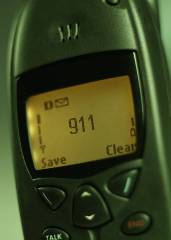When to Worry

Advances in early recognition and treatment over the past decade have dramatically reduced heart attack mortality rates to less than five percent in those patients treated early in the event. Today, if a patient is admitted promptly, doctors can open up the blood vessel, begin treatment and save the heart muscle.
The Warning Signs
The classic warning signs of a heart attack are shortness of breath, nausea, vomiting, sweating and chest pains. Not every patient however, has these classic symptoms. A significant number of heart attack victims, often elderly females and diabetics, have no warning signs or mistake obscure symptoms such as feeling slightly uncomfortable in the chest for a less severe condition. All of this leads to poor early recognition and increased fatality rates.
When to Take Action
There are three important steps to take when responding to a heart attack:
1. Recognize the symptoms. If you or a loved one is feeling shortness of breath, sweating and nausea, it may be a heart attack.
2. Call 911. Delaying treatment can cause dramatic loss of heart muscle. It is important that a heart attack patient gets into the hospital?s catheter lab as soon as possible, allowing the physician to restore effective blood supply.
3. Take one adult aspirin or four baby aspirin while waiting for the medic to arrive. Aspirin has been proven to increase survival in patients suffering a heart attack.
Knowing the signs of a heart attack and following these steps when responding to a heart attack can help save your or a loved one?s life.
Helping Others to Recognize Heart Attack Symptoms
You can help teach others the symptoms of a heart attack by sharing this video with your family and friends: http://twurl.nl/wm1tsc
Ways to share the video:
1. Post this link on your Facebook account to help others learn the warning signs: http://twurl.nl/wm1tsc
2. Share this video link via e-mail with family, friends and loved ones. Help spread the word about warning signs of a heart attack. http://twurl.nl/wm1tsc
3. Post one, or all, of these tweets to your Twitter.
- Help me teach 105,000 of our closest friends to #KnowTheSigns. Please RT. http://twurl.nl/wm1tsc
- 105,000 heart attacks strike each month ? that?s 1 every 25 seconds and 1 death every min. #KnowTheSigns: http://twurl.nl/wm1tsc
- 105,000 people have a heart attack each month ? enough to fill Ohio Stadium. #KnowTheSigns: http://twurl.nl/wm1tsc
- Most people experience heart attack warning signs. #KnowTheSigns & get help early. http://twurl.nl/wm1tsc
- Common heart attack warning signs everyone should know: #KnowTheSigns: http://twurl.nl/wm1tsc
- Seconds count when you?re having a heart attack. #KnowTheSigns: http://twurl.nl/wm1tsc
- #KnowTheSigns of a heart attack & share them w/ family & friends: http://twurl.nl/wm1tsc
By sharing these warning signs, you can help save lives.
This article originally appeared in The Ohio State University Medical Center’s Heart Newsletter and is published with permission.
Related Resources:
Are You at Risk for Cardiac Arrest?
Subtle Symptoms May Be Biggest Clues to Heart Attack
Women and Heart Attacks: The Symptoms Are Subtle
For more information:
Go to the Heart Disease health topic.